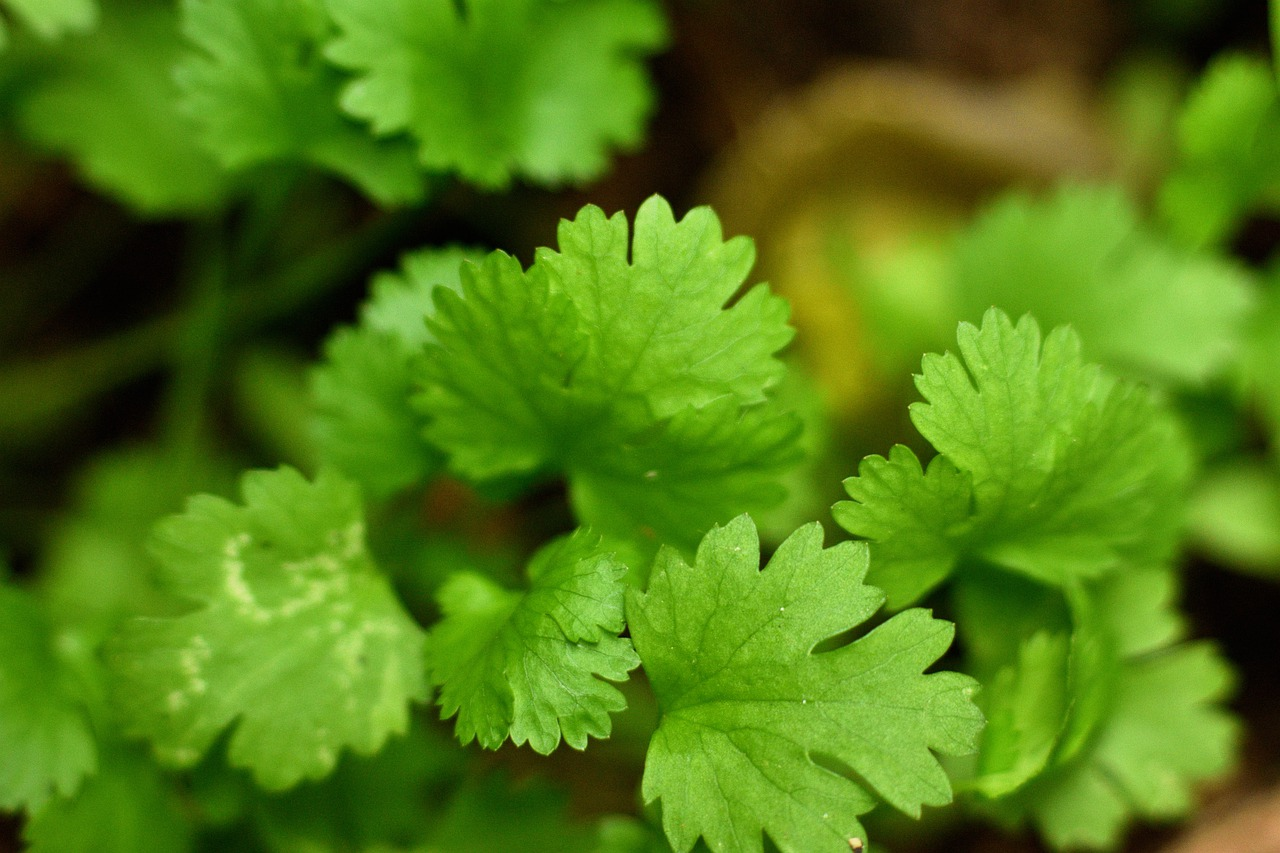
Growing Coriander: Tips for Companion Plants & Mixed Cultivation
In this article, you can find out what you need to consider when growing coriander in your own garden. We give you tips on the right location, sowing and harvesting as well as good and bad companions in a mixed crop.
This Article Contains:
- Growing Coriander: What Is Coriander?
- The Best Location and Soil
- Sowing Coriander: How It Works
- Corinder Cultivation: Companion Plants for Mixed Cultivation
- What to Plant With Coriander?
- Mixed Crop Planting Plans With Coriander: Good Companion Plants in the Vegetable Patch
- Caring for coriander: tips for healthy plants
- Overwintering Coriander: Is Coriander Hardy?
- Harvesting Coriander: Use as a Spice
- Freeze Coriander: What You Need to Keep In Mind
- Frequently Asked Questions About Planting Coriander
Quick Overview
Coriander: Location, Soil, Sowing
- Location: warm, sunny to semi-shady location with loose and well-drained soil
- Sowing depth: 1 to 2 cm/0.4 to 0.8 in (dark germinator!)
- Planting distance: 30 x 30 cm/11.8 x 11.8 in
- Germination temperatures: between 12 and 22 ° C/53 and 72 ° F
- Sowing time: outdoors between April and May, pre-cultivation indoors from March
What Grows Well With Coriander?
- Good companion plants, f.e. beans, chili, peas, strawberries, cucumbers, potatoes, cabbage, horseradish, peppers, beet, lettuce, tomatoes,...
- Bad companion plants, f.e. fennel, spring onions, chervil, garlic, cress, parsnip, rocket, chives, Jerusalem artichoke, root parsley
Growing Coriander: What Is Coriander?
The taste of coriander often divides opinion, as the herb has a unique, strong aroma. The annual herb is part of the umbellifer family (Apiaceae) and forms its own genus within this family: coriander (Coriandrum). In our latitudes, it is mostly the true coriander (Coriandrum sativum) that is cultivated, but it can be found all over the world.
There is also Vietnamese coriander (Persicaria odorata), which is not related to true coriander. It belongs to the knotweed family and also looks very different from true coriander. Unlike true coriander, Vietnamese coriander is a perennial plant, but is not frost-hardy. It is therefore better to overwinter it indoors. It only bears the name because it has a similar aroma to coriander.
What Does Coriander Look Like?
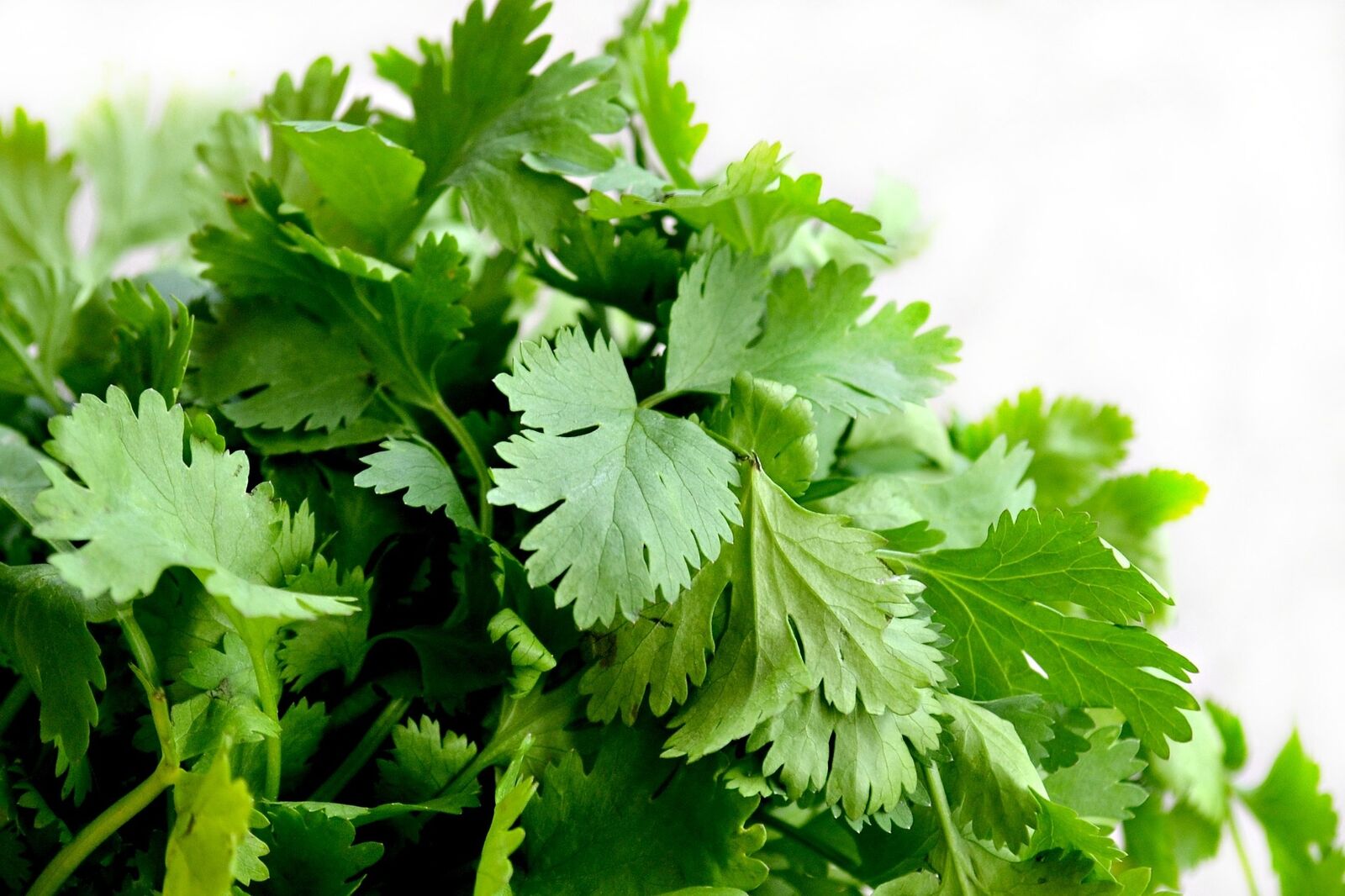
True coriander grows as a bushy herb that can reach a height of up to 90 cm/35, 4 in, depending on the location. Its finely feathered leaves and intense scent are very characteristic, making it easy to recognize.
Small white flowers bloom from June to July, from which the rather large coriander seeds later develop, which we also like to use as a spice. The coriander flower looks very beautiful and attracts insects and pollinators as it provides valuable food. Coriander is therefore a good partner for vegetable plants in the bed, but can also be grown in pots on the balcony. Coriander also exudes a very strong fragrance, which can help prevent diseases and pests in a mixed culture.
The Best Location and Soil
True coriander probably originates from the Mediterranean region and therefore likes warm and sunny conditions. Choose a sunny to semi-shady location. If your aim is to harvest the leaves, a semi-shady spot is more suitable for the coriander herb, as this will produce more leaves. A very sunny spot is suitable for harvesting lots of coriander seeds. As a light feeder, coriander is very frugal and thrives best in well-drained, loose soil. If the nutrient levels are too high, the coriander herb becomes more susceptible to infestation by aphids and fungal diseases. An even supply of water is important for the coriander plant to grow well, as coriander likes to grow in moist locations. However, it does not tolerate waterlogging well!
Sowing Coriander: How It Works
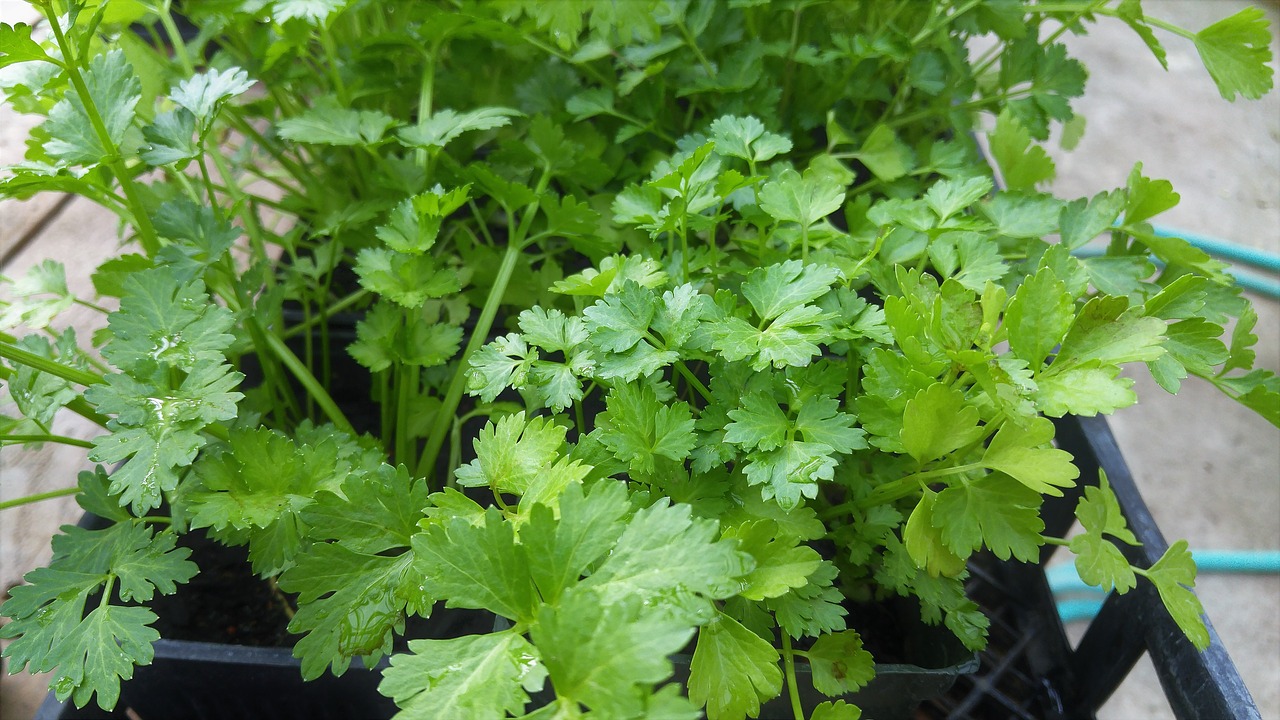
Coriander is a thermophilic plant and sensitive to heavy frosts. It needs temperatures between 12 and 22 °C/53.6 and 71.6 °F to germinate. This is why the seeds are only sown outdoors from the beginning of April to the end of May. Of course, you can also pre-cultivate the plants indoors from March, so you can start harvesting earlier. For pre-cultivation, you can use nutrient-rich soil directly, which eliminates the need for pricking out. With pre-cultivation, you can plant out the young plants from mid-May.
Sowing Depth & Planting Distance
Place the seeds about 1 to 2 cm/0.4 to 0.8 in deep in the soil, as coriander is a dark germinator. Choose a planting distance of about 30 x 30 cm/11.8 x 11.8 in. Press the soil down a little and keep the soil well moist until germination.

Plan a Mixed Crop With Coriander
With our bed planner, you can easily plan a colourful mixed crop. Good and bad companion plants are displayed directly and you get tips on succession planting and crop rotation!
Plan a Bed NowCorinder Cultivation: Companion Plants for Mixed Cultivation
Due to its essential oils, coriander is a good companion for many vegetable plants. With its strong scent, it is said to keep some diseases and pests away from your bed, such as aphids, spider mites, Colorado potato beetles and cabbage white butterflies. At the same time, it attracts pollinating insects with its flowers. However, it is important to choose the right bed partners so that all plants grow healthily. Plants of the same family are usually not suitable companions. You should also consider its growth habit so that you choose plants that complement each other well and fill the space in the bed optimally. Coriander, for example, is very suitable for planting under climbing plants or as a border. It forms tap roots that reach quite deep into the soil. It is therefore a medium-rooted plant and can be well complemented with shallow or deep-rooted plants. You can find an overview of good and bad companions below. You can find more Information on Planning a Good Mixed Crop in a Vegetable or Herb Bed in our article on this topic.
What to Plant With Coriander?
| Good Companion Plants - Vegetables | Good Companion Plants - Flowers & Herbs | Bad Companion Plants |
|---|---|---|
| Beetroot | Anisseed | Celeriac |
| Chilli | Basil | Chervil |
| Cucumber | Camomile | Chives |
| Head cabbage | Ginger | Cress |
| Horseradish | Lemon balm | Fennel |
| Kohlrabi | Marigold | Garlic |
| Leafy cabbage | Marjoram | Jerusalem artichoke |
| Lettuce | Mint | Parsnip |
| Pea | Mustard | Rocket |
| Pepper | Rosemary | Root parsley |
| Potato | Sage | Spring onions |
| Runner bean | Sunflower | Vegetable fennel |
| Strawberry | Tarragon | |
| Tomato | Thyme |
Coriander and Tomatoes as Good Companion Plants
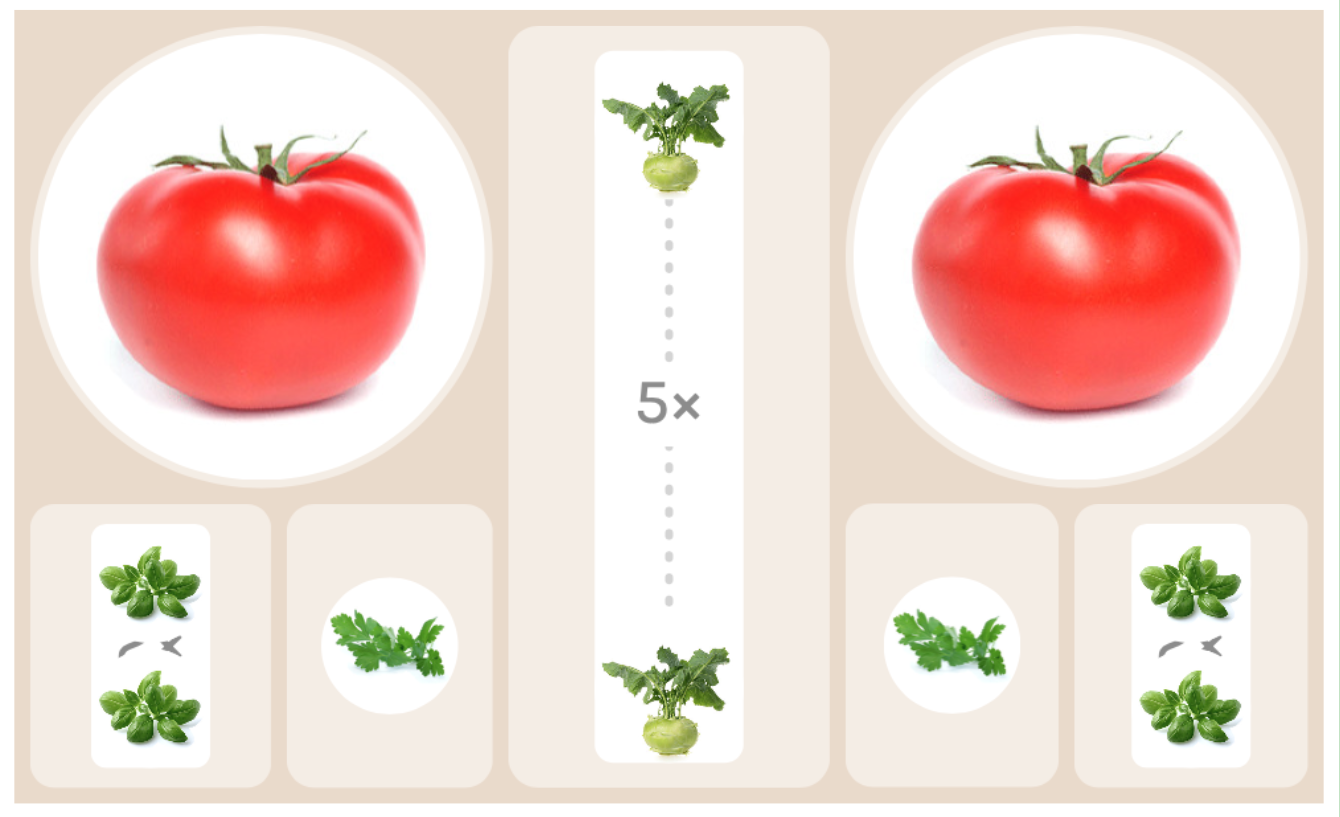
In this mixed crop, tomatoes and kohlrabi grow together with basil and coriander. Tomatoes, like coriander, are susceptible to mildew, so sufficient plant spacing is important for good aeration of the crop. Basil should also protect other plants from mildew, which is why it is a good addition here.
Plant Coriander and Cucumber Together
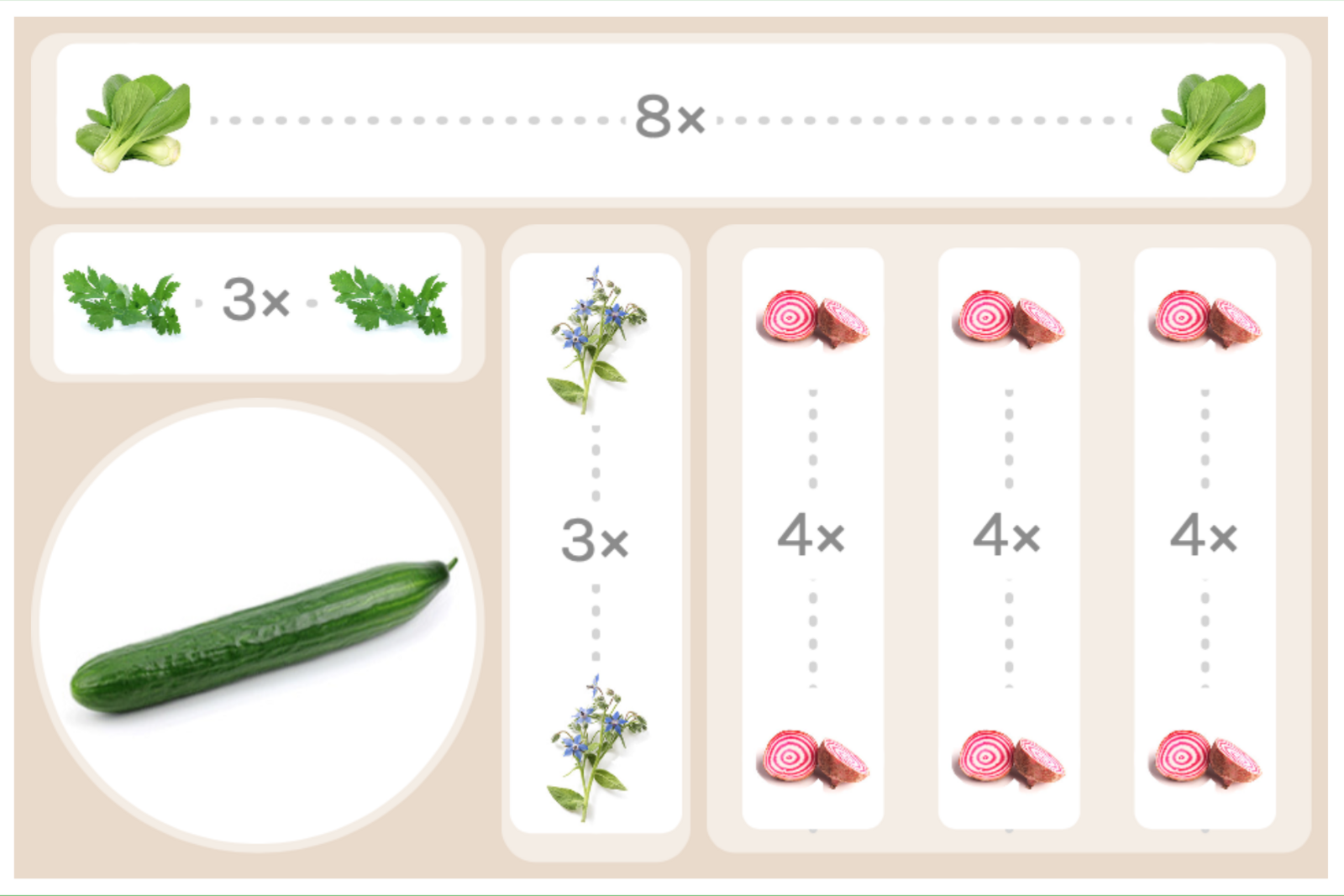
In this bed you will find cucumber, pak choi and beet as vegetable plants. Borage is sown in between, which attracts insects as a flowering plant. Borage leaves and flowers can also be used fresh. Coriander grows between the cucumber and the park choi, which is said to keep diseases and pests such as the cabbage white butterfly away with its strong scent. However, you should be aware that both coriander and cucumbers are susceptible to mildew. It is therefore also important here to ensure sufficient planting space and good ventilation.
Mixed Crop Planting Plans With Coriander: Good Companion Plants in the Vegetable Patch
You can find more inspiration for your vegetable or herb bed with coriander in our ready-made planting plans. Here you will also find the above planting plans with suitable pre- and post-crops so that you can harvest fresh vegetables all year round and make good use of the space in your bed.
Caring for coriander: tips for healthy plants
- Water regularly and keep moist until germination. When the young plants are two to three weeks old, they can provide themselves with water. Then only water during long periods of drought. You can find more Tips on Watering Plants Properly and Saving Water in this article.
- Loosen the soil from time to time and remove weeds to promote the growth of coriander.
- Coriander is susceptible to powdery mildew, especially in warm, humid weather. Preventive measures are best here, such as leaving enough space between the plants so that sufficient air can circulate. If you already have an infestation, plant dips made from horsetail or stinging nettle can help. You can find instructions on How to Make Your Own Nettle Liquid Manure here.
Overwintering Coriander: Is Coriander Hardy?
Coriander is a thermophilic herb and is therefore not hardy or frost-hardy. True coriander grows as an annual, flowers in the first year and then also forms its seeds. If you leave it, it will reseed itself in the bed. Its seeds then overwinter in the bed and sprout again the following spring. If you want to sow the coriander in a different place the following year, you can also collect the seeds and sow them again the following year. If you want to use the coriander seeds as seed or spice, harvest the brown, spherical seeds when they are fully ripe.
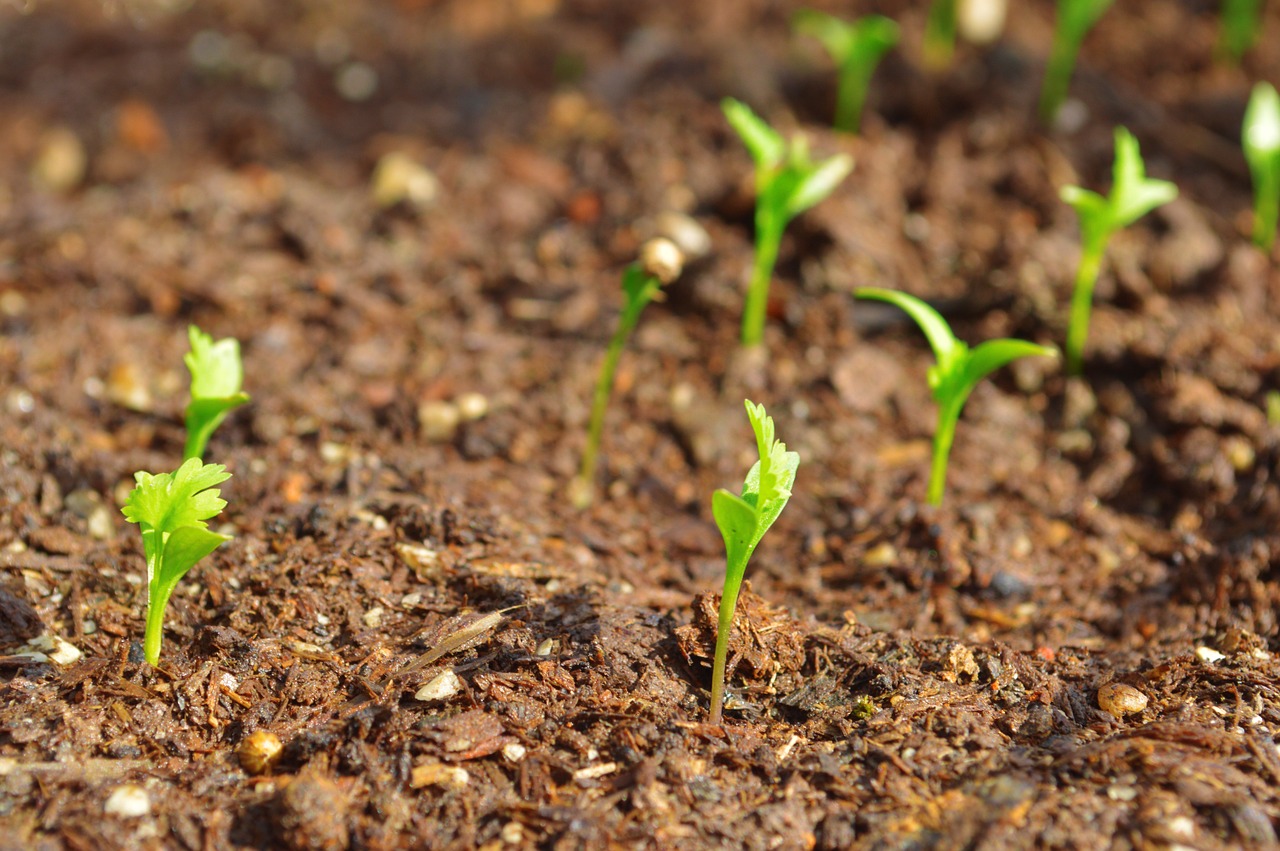
Vietnamese Coriander Is Hardy
As already mentioned, Vietnamese coriander is an alternative that also grows perennially. However, this variety is not completely hardy and only survives very mild winters outdoors in the bed. This plant dies in frost, which is why it is best grown in a pot and kept in a frost-free place over the winter. A sunny spot with moderate temperatures between 5 and 10 ° C/41 and 50 ° F is best. Don't forget to water your plants occasionally to prevent them from drying out. You can find out How to Overwinter Perennial Plants in Pots and what you need to bear in mind here.
Harvesting Coriander: Use as a Spice
Coriander is a popular spice, with both the leaves and the seeds being used in cooking. The coriander green is often used fresh, but can be dried. The coriander seeds, on the other hand, are used dried as a spice. You can find out how to harvest coriander leaves and seeds below.
Harvesting Coriander Leaves: Does Coriander Grow Back?
You can harvest the coriander green as soon as the plant is about 15 cm/6 in tall. The plant is then strong enough to sprout again. If you harvest correctly, your coriander will grow back continuously throughout the season and you can harvest several times. Cut the leaves close to the ground with a sharp, clean knife. Choose the outer leaves and leave the heart of the plant. When the plant starts to flower, the leaves lose their aroma and can sometimes have a slightly bitter taste.
Harvesting Coriander Seeds as a Spice
You have to be patient a little longer to harvest coriander seeds. After flowering, the seeds develop, which first turn green and then brown as they mature. The seeds are harvested when they are fully ripe and brown. You can now either harvest the coriander seeds individually and dry them. Alternatively, you can cut off the whole stalks and place them in a dry, well-ventilated place. You can then store the dried seeds in an airtight jar and use them as a spice.
Can You Eat Coriander Flowers?
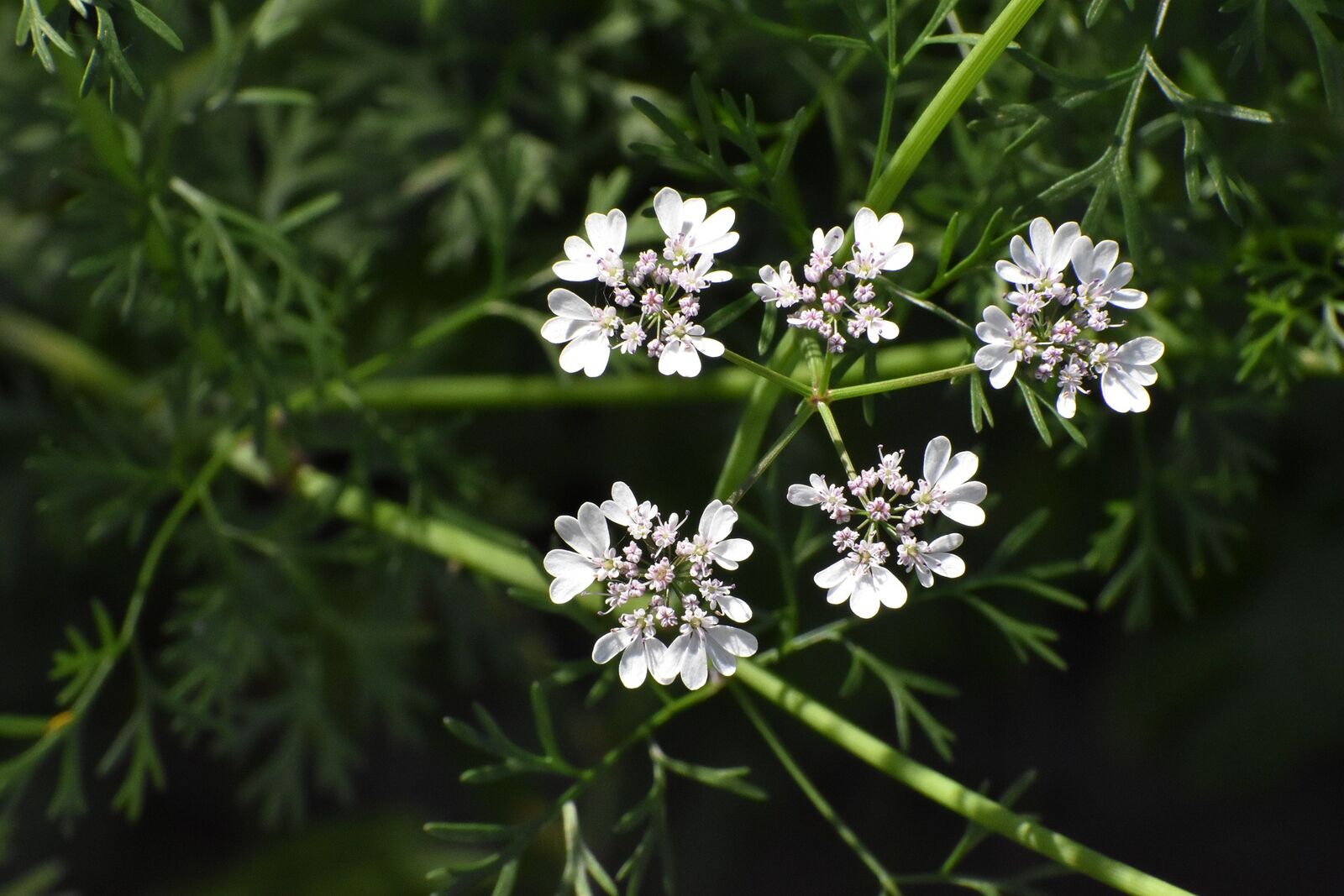
The flowers of the coriander plant are also edible, but have a milder taste than the leaves and seeds. If your coriander starts to flower, you can delay seed formation by harvesting the flowers. This will further stimulate leaf growth.
Freeze Coriander: What You Need to Keep In Mind
If you can harvest more coriander than you use, you can also freeze it without any problems. Freezing is a great way to preserve the flavor and keep your harvest for a longer period of time. To do this, wash the leaves thoroughly with water after harvesting and leave them to dry. The leaves can be frozen either whole or chopped, depending on your preference. You can now freeze the whole or chopped leaves fresh in plastic bags. Alternatively, you can put chopped leaves in an ice cube tray, fill with water and then freeze. This makes it easy to add coriander to your dishes. Freezing can change the texture of the leaves, making it more suitable for cooking.
I hope this has whetted your appetite for growing your own coriander in the garden or on the balcony. If you have any questions or comments, please write to us at magazin@fryd.app.
Want to get helpful gardening tips all year round and plan your own beds in the best possible way? Then register here or download the Fryd app for Android or iOS.
Fryd - Your digital bed planner
Cover picture by newtonisimo on Pixabay.
Marie
Current Topics in the Community

#red , #tuesday

Liked 1 times
#testpostcount

Dec 2025
Popular Articles

Companion Plants for Carrots: What (Not) to Plant With Carrots

Companion Plants for Celery : What (Not) to Plant With Celery?

Strawberry Types: List of Best Strawberry Varieties

Companion Planting With Strawberries: Companion Plants and Planting Plan

Basil Varieties & Types at a Glance

What to Plant With Cabbage: Good and Bad Companion Plants

Fertilizing Strawberries: Home Remedies & Natural Fertilizers at a Glance

Growing Sweet Potatoes: Tips on Cultivation & Companion Plants

Companion Plants for Kitchen Herbs: Chives, Parsley & Co

What Herbs Can Be Planted Together?
FAQ
True coriander is an annual plant that is not hardy and does not tolerate frost. Vietnamese coriander, on the other hand, is a hardy herb, but only partially frost-hardy.
Does coriander grow as an annual or perennial?
True coriander (Coriandrum sativum) grows as an annual. It flowers directly in the first summer and if you leave it, it will reseed itself and grow again the following year. An herb that tastes like coriander and is perennial is Vietnamese coriander.
What are good companion plants for coriander?
Good neighbors for coriander include chili, peas, cucumbers, cabbage, beet, tomatoes and many herbs such as basil, marjoram, rosemary and sage.
What are bad companions for coriander?
You should not plant fennel, celeriac, garlic, parsnip and root parsley directly next to coriander. Herbs such as chervil, cress and chives also don't go so well next to coriander.